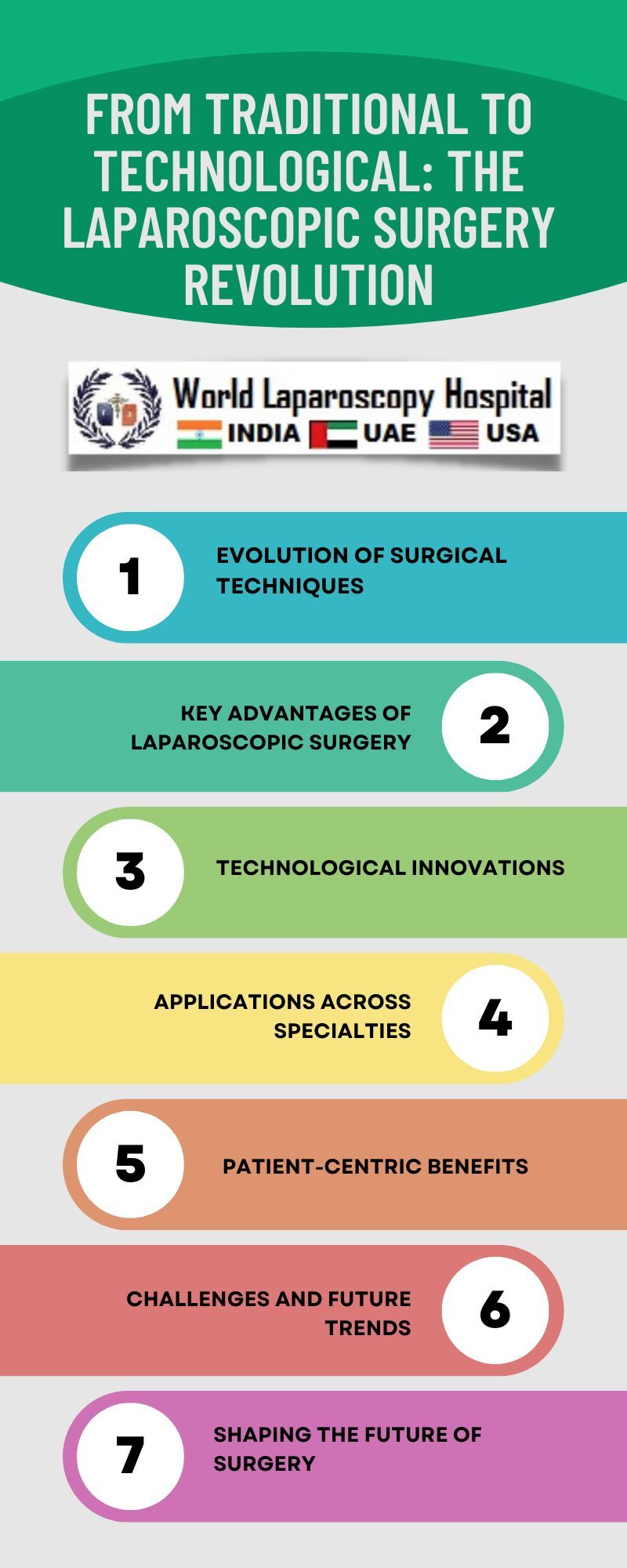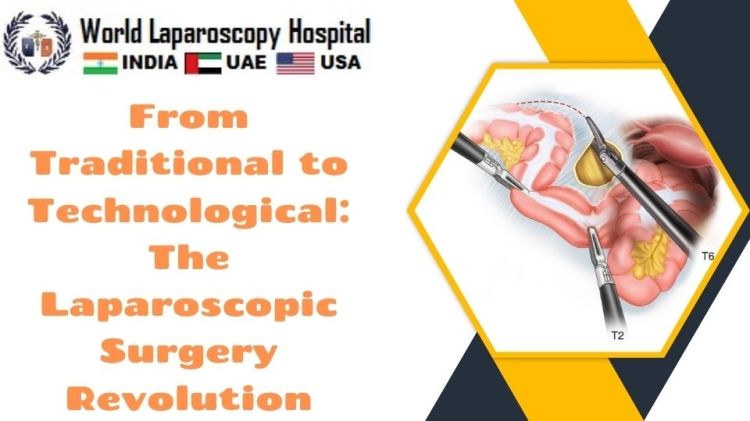Introduction:
In the realm of medical advancements, one revolutionary transformation has significantly impacted the field of surgery – the shift from traditional open surgeries to the marvel of laparoscopic surgery. This evolution represents a groundbreaking leap in surgical techniques, bringing forth a host of benefits for both surgeons and patients alike. In this article, we will delve into the origins of laparoscopic surgery, explore its key components, and analyze the profound impact it has had on the medical landscape.

The Genesis of Laparoscopic Surgery:
Early Attempts and Milestones:
The concept of minimally invasive surgery dates back to the early 20th century, with surgeons experimenting on ways to reduce the trauma associated with traditional open procedures. However, it wasn't until the 1980s that laparoscopic surgery truly took root. The pioneering work of Philippe Mouret, a French surgeon, marked a watershed moment when he performed the first laparoscopic cholecystectomy in 1987.
The Advent of Technological Innovation:
The success of the initial laparoscopic procedures prompted rapid technological advancements. High-resolution cameras, fiber optics, and miniature instruments emerged as integral components, enabling surgeons to perform complex surgeries through small incisions. The laparoscope, a tubular instrument fitted with a camera and light source, became the surgeon's eyes inside the patient's body.
Key Components of Laparoscopic Surgery:
The Laparoscope:
The laparoscope is the linchpin of laparoscopic surgery. This slender tube, equipped with a camera and light source, is inserted through a small incision, providing a magnified and illuminated view of the internal organs. This transformative tool allows surgeons to navigate and perform intricate procedures with unparalleled precision.
Trocars and Cannulas:
Trocars are specialized instruments used to puncture the abdominal wall, creating access points for the insertion of other surgical instruments. Cannulas, hollow tubes, are then threaded through the trocars, providing a conduit for the passage of instruments like graspers, scissors, and staplers into the abdominal cavity.
Miniature Surgical Instruments:
Laparoscopic surgery employs a range of miniature instruments, each designed for specific tasks. These instruments, manipulated by the surgeon from a console, mimic the movements of the surgeon's hands with remarkable dexterity. The development of robotic-assisted systems has further augmented the precision and range of motion of these instruments.
Advantages of Laparoscopic Surgery:
Reduced Trauma and Scarring:
Compared to traditional open surgeries, laparoscopic procedures result in significantly reduced trauma to the body. Small incisions replace large, invasive cuts, leading to less pain, faster recovery times, and minimal scarring. Patients often experience improved cosmetic outcomes and a quicker return to normal activities.
Faster Recovery and Shorter Hospital Stays:
The minimally invasive nature of laparoscopic surgery translates into shorter hospital stays and faster recovery for patients. Reduced postoperative pain, diminished risk of infections, and a quicker return to daily life contribute to the overall appeal of laparoscopic procedures.
Improved Visualization:
The laparoscope provides surgeons with a magnified, high-definition view of the surgical site, enhancing their ability to identify and address issues with greater accuracy. This improved visualization is particularly beneficial in intricate procedures, such as gastrointestinal and gynecological surgeries.
Enhanced Precision and Maneuverability:
Miniaturized instruments and robotic-assisted systems enable surgeons to perform complex maneuvers with heightened precision. The articulation and range of motion offered by these instruments surpass the capabilities of the human hand, allowing for intricate tasks in confined spaces.
Challenges and Limitations:
Learning Curve:
Transitioning from traditional open surgery to laparoscopic techniques requires surgeons to undergo extensive training due to the fundamental differences in approach. The three-dimensional view afforded by open surgery is replaced by a two-dimensional image on a monitor, demanding a reorientation of spatial awareness and hand-eye coordination.
Cost and Infrastructure:
The initial setup costs for laparoscopic surgery, including the acquisition of specialized equipment and training, can be substantial. Not all medical facilities may have the resources to invest in this technology, posing a challenge to widespread adoption, especially in developing regions.
Ergonomics and Surgeon Fatigue:
Prolonged use of laparoscopic techniques can lead to ergonomic challenges for surgeons. Operating for extended periods in a fixed position may result in physical strain and fatigue. Robotic-assisted systems have alleviated some of these issues by offering improved ergonomics and more comfortable interfaces.
The Future of Laparoscopic Surgery:
Continued Technological Advancements:
The trajectory of laparoscopic surgery is intertwined with ongoing technological innovations. As artificial intelligence (AI) and machine learning become more integrated into healthcare, the potential for enhanced diagnostics, personalized treatment plans, and improved surgical outcomes in laparoscopic procedures expands.
Robotics and Telemedicine:
The convergence of laparoscopic surgery and robotic technology is set to redefine the surgical landscape. Robotic-assisted systems, with their sophisticated algorithms and precision, are poised to become increasingly commonplace. Furthermore, the integration of telemedicine platforms may allow surgeons to collaborate remotely, providing expertise and guidance during complex laparoscopic procedures.
Patient-Centric Approaches:
The evolution of laparoscopic surgery emphasizes a shift towards patient-centric care. The emphasis on reduced trauma, quicker recovery times, and improved cosmetic outcomes aligns with a broader trend in healthcare towards minimally invasive interventions that prioritize the well-being and satisfaction of patients.
Conclusion:
The journey from traditional open surgeries to laparoscopic techniques represents a transformative chapter in the history of surgery. The combination of technological innovation, meticulous instrumentation, and a commitment to patient-centric care has propelled laparoscopic surgery to the forefront of modern medicine. As we stand at the intersection of robotics, AI, and telemedicine, the future promises even more remarkable advancements, solidifying laparoscopic surgery as a cornerstone of surgical excellence. The ongoing quest for precision, efficiency, and improved patient outcomes continues to drive the evolution of laparoscopic surgery, shaping the future of healthcare delivery.
